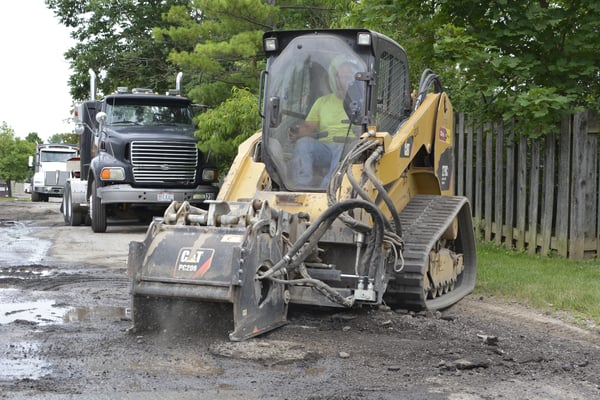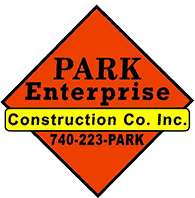Editor's Note: This blog post was originally posted on November 8, 2017 and was updated on July 13th, 2018.
Sometimes parking lots and roads just can’t be paved any higher. Regular overlays in almost all cases add stability and years to the life of an asphalt lot. But that’s feasible only so many times.
Eventually, the surface will need to be grounded down to make room for fresh (recycled) asphalt. This is a process that is called asphalt milling, and is achieved through the use of a milling machine.

A drumhead covered in spikes removes the top layer without disturbing the subgrade - a critical component to the future stability of the driving surface. A poor subsurface will weaken over time and create ugly and hazardous pavement failures.
How is the Asphalt Milling Process Done?1. Grinding the Surface
A cutting drum armed with spikes grinds the top layer of asphalt. It rotates cutting heads across the surface, pulverizing the existing asphalt evenly down to a predetermined depth.
This is done without disturbing the crucial subgrade, which, if damaged or weakened, will not support the weight of the driving surface and vehicles above it, resulting in unsightly and potentially dangerous pavement failures. The milling process also leaves existing infrastructure like curbs and drainage systems intact.
2. Removing the Remnants
A clean surface is critical for ensuring a stable bond between the base and the fresh asphalt. A vacuum and conveyor system removes the crushed material and transfers it to a dump truck.
3. Recycling the Material
Using reclaimed asphalt pavement (RAP) benefits the environment and your financial bottom line.Recycling asphalt saves between $30 and $80 per ton, on average, compared to making fresh asphalt.
For the contractor, recycling asphalt reduces time, energy, and transportation. Those costs ultimately get passed down to you. For the environment, recycled asphalt reduces the use of oil and other natural resources in addition to eliminating waste.
How Our Milling Machine Helps YouOur new asphalt milling machine (a Wirtgen W 120 CFi) has brought efficiency and cost-savings to parking lot and road reconstruction jobs. No longer will you have to pay for a costly third-party subcontractor to strip away old driving surface in addition to installing a new asphalt surface.
We’ve found that using a contractor that does both milling and paving can save 10%-12%. If you’re revamping a 50,000 sq. ft. commercial parking lot, for example, that could mean up to $5,000 off the final bill.
Owning the asphalt milling machine, as opposed to renting one or mobilizing a third party, allows us total scheduling flexibility to meet your deadlines. Furthermore, recycling materials and foregoing a full reconstruction is better for the environment.
Our Milling Machine’s Features
It’s a compact front loader capable of suiting many different milling applications. It features:
- Working width of 3 ft. 11 in.
- Milling depth up to 13 in.
- 345 horsepower
- Compact dimensions
- Optimized weight and loading process
- Large slewing angle
- Adjustable front-loading conveyor speed
This asphalt milling machine has a modern control system with LEVEL PRO Plus and is fit for one-person operation. It meets U.S. Tier 4f emissions standards.
Choose an experienced asphalt paving company to do the whole job. Don’t wait too long - a crumbling parking lot can have terrible effects on your business.




